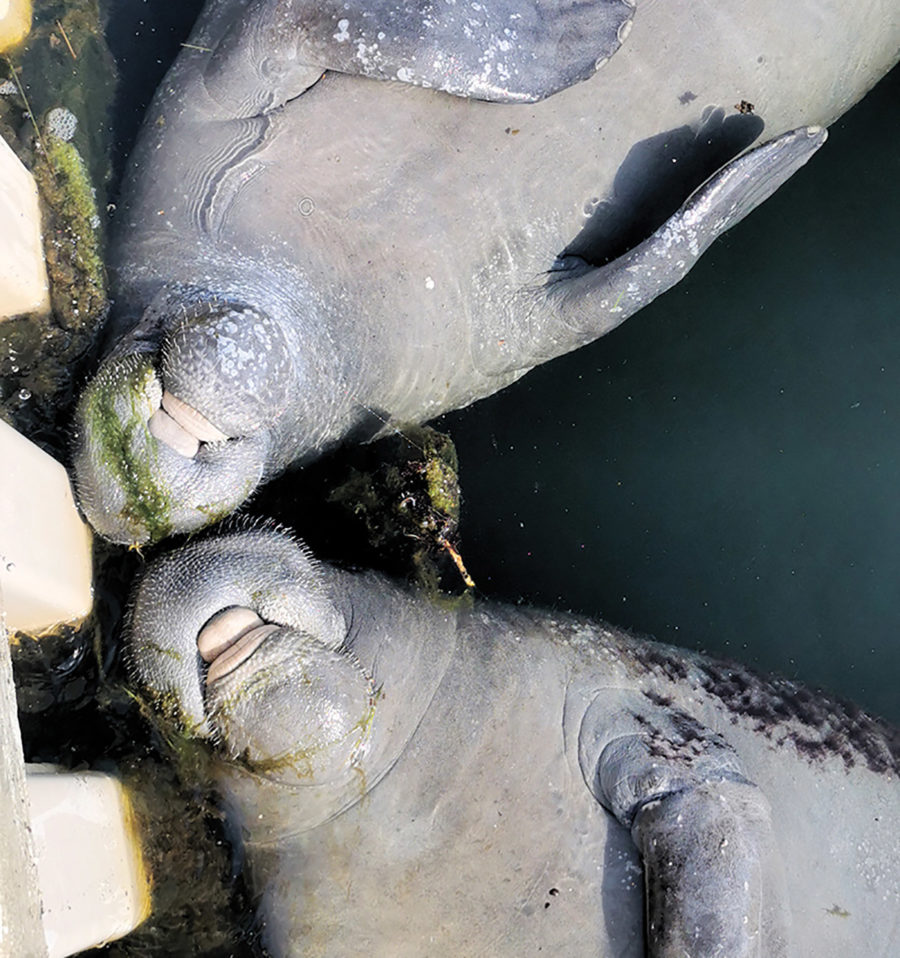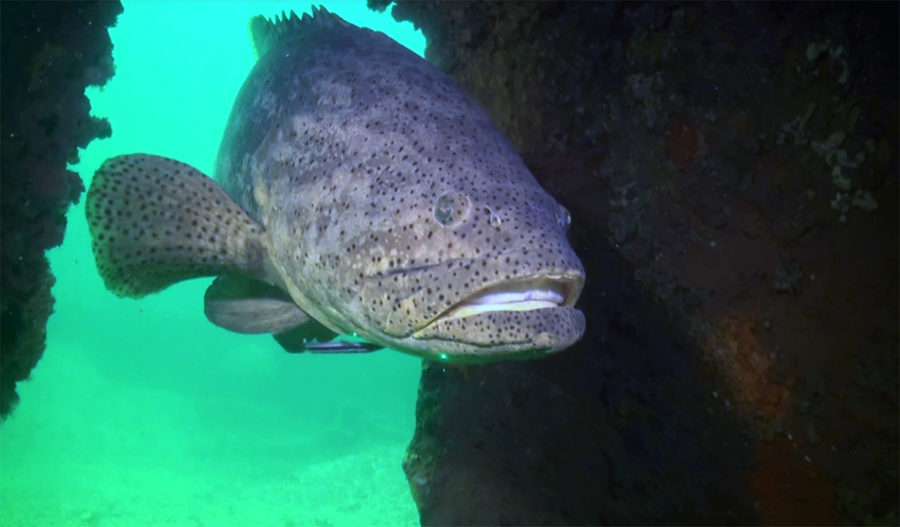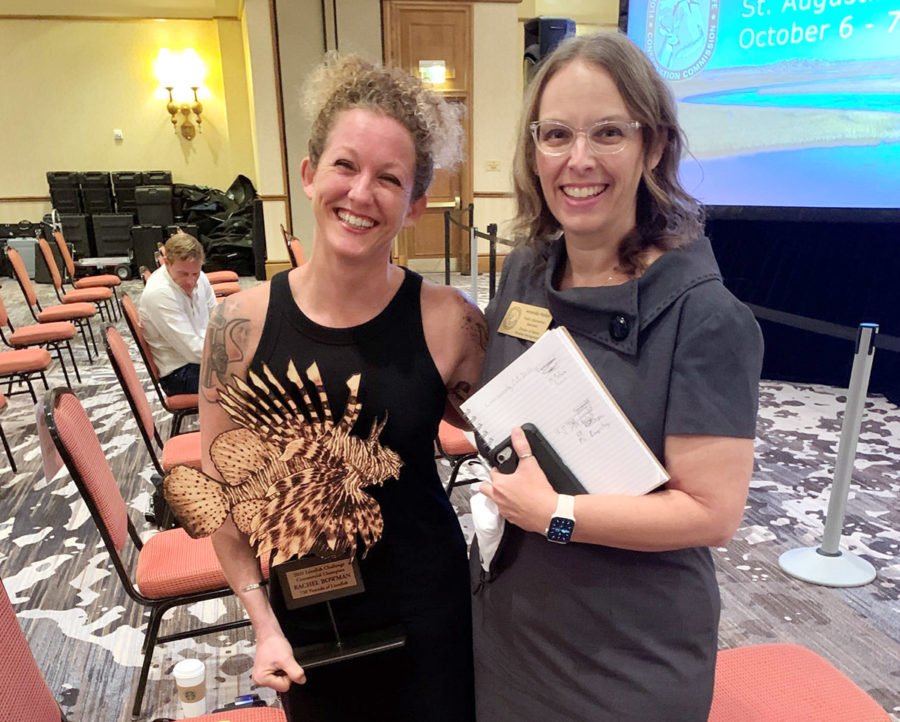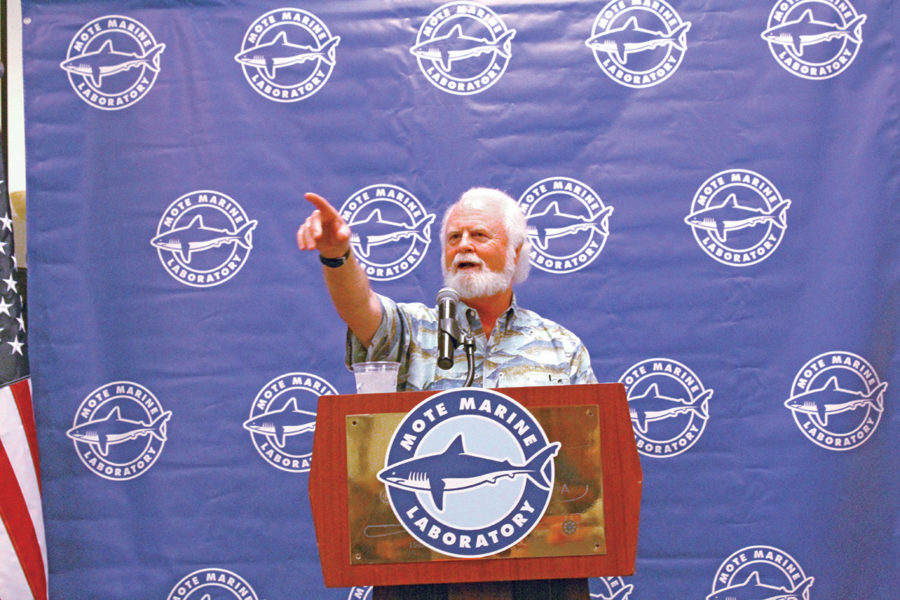By Alex Rickert and Jim McCarthy
If offered a choice of places to ride out a global pandemic, an island chain with Listerine-blue waters just might top the list. The Keys’ grass beds and reef ecosystems are iconic, and 2021 saw many efforts mounted to make sure they remain as such. From the harvesting of both invasive and protected fish to growing concern for a beloved mammal, and everything in between, here is a small sample of the dozens of noteworthy environmental headlines from the past year.

FWC, U.S. Fish and Wildlife aim to curb rising deaths
The Florida Fish and Wildlife Conservation Commission (FWC) and the U.S. Fish and Wildlife Service (Service) are working to address a manatee unusual mortality event (UME) along Florida’s Atlantic coast. The agencies are standing up a joint team under the emergency response Incident Command System (ICS). The announcement of the joint incident management team underscores the commitment the Service and FWC share in addressing threats to manatees, especially in light of an FWC announcement on Nov. 17, indicating 1,003 manatees – more than 10% of Florida’s estimated population – have died since the start of 2021. Researchers have attributed the UME to starvation due to the lack of forage in the Indian River Lagoon. Historically, the lagoon has provided essential habitat to manatees year-round, and during the colder winter months many manatees depend on warm water refuges in this area.

FWC proposal to relax goliath grouper ban outside most of the Keys prompts debate
An abundance of goliath grouper in Florida has prompted state wildlife officials to consider allowing a limited harvest of the giant protected fish in state waters. The Florida Fish and Wildlife Conservation Commission recently approved a proposed draft rule to provide access to goliath in certain areas, but it’s not a done deal. The draft rule approved earlier this month would allow the recreational harvest of up to 200 goliath grouper per open season from March 1 to May 31. An angler would need a recreational goliath grouper harvest permit and tag that would be issued via a random-draw lottery. Lottery winners would be allowed one fish per person, per open season and would pay a fee of $500. Harvested goliath would need to measure within a slot limit of 20 to 36 inches total length. With initial approval by FWC, staff will gather public feedback on the draft rule and return for a final public hearing at the March 2022 commission meeting.

Marathon’s Rachel Bowman captures 2021 Lionfish Challenge title
For most people, 700 pounds of fish constitutes a monstrous bounty from the sea. But for the 2021 commercial Lionfish Challenge champion Rachel Bowman, it’s “not my best year.” At their October meeting, the Florida Fish and Wildlife Conservation Commission (FWC) honored the winners of the 2021 Lionfish Challenge. Now in its sixth year, the program incentivizes removal of the venomous, invasive Indo-Pacific fish for both recreational and commercial harvesters. As this year’s commercial champion (and first-ever female winner) with 730 pounds of lionfish removed in 2021 alone, Bowman sees the challenge — and lionfish harvesting in general — as a financial and ecological win. Although she is a commercial harvester, she always has the environmental roots of the competition on her mind. It would be easy to harvest large fish while leaving smaller individuals to keep a site stocked for future trips, but she is strongly opposed to this practice. “If I find a spot with lionfish on it, you won’t find them when you go there.”


Local captains rid waters of 32,600 pounds of marine debris
Eleven fishing captains from Key West and the Lower Keys spent three days on the water May 24-26 removing not fish, but abandoned or derelict traps, line and marine debris from local waters. By the end of the second day, they had rid the ocean of 32,680 pounds of debris, including 694 abandoned traps – and those totals were still growing as of press time. One boat even rescued a sea turtle that had become stuck in a ghost trap and suffered an injured flipper. Ghost traps are abandoned stone crab or lobster traps that are lost when their floating buoy marker is dislodged from the trap and the owner can no longer locate it due to a storm or a boat propeller cutting the trap line. Such traps continue to catch and kill marine life despite no longer being checked by an angler (called ghost fishing). They endanger vessels and marine mammals that may tangle in the gear.
——————————————————————————–

Coral nursery in Islamorada aims to restore reef
In Islamorada, Mote is building a land-based coral nursery, the first of its kind in Islamorada, on the beach at Bud N’ Mary’s Marina. The new coral nursery will supplement Mote’s in-water Looe Key and land-based Summerland Key nurseries. The goal is to bring the coral reefs back to healthy coral coverage through targeted restoration efforts. “It’s going to be incredibly impactful, and that wouldn’t have happened if it weren’t for Richard Stancyzk (owner and operator at Bud N’ Marys),” said Michael Crosby, Mote president and CEO. “That’s going to be able to help us target the coral reefs up here, not just in the Lower Keys.” The expansion was celebrated with local leaders at Cheeca Lodge in May.

























